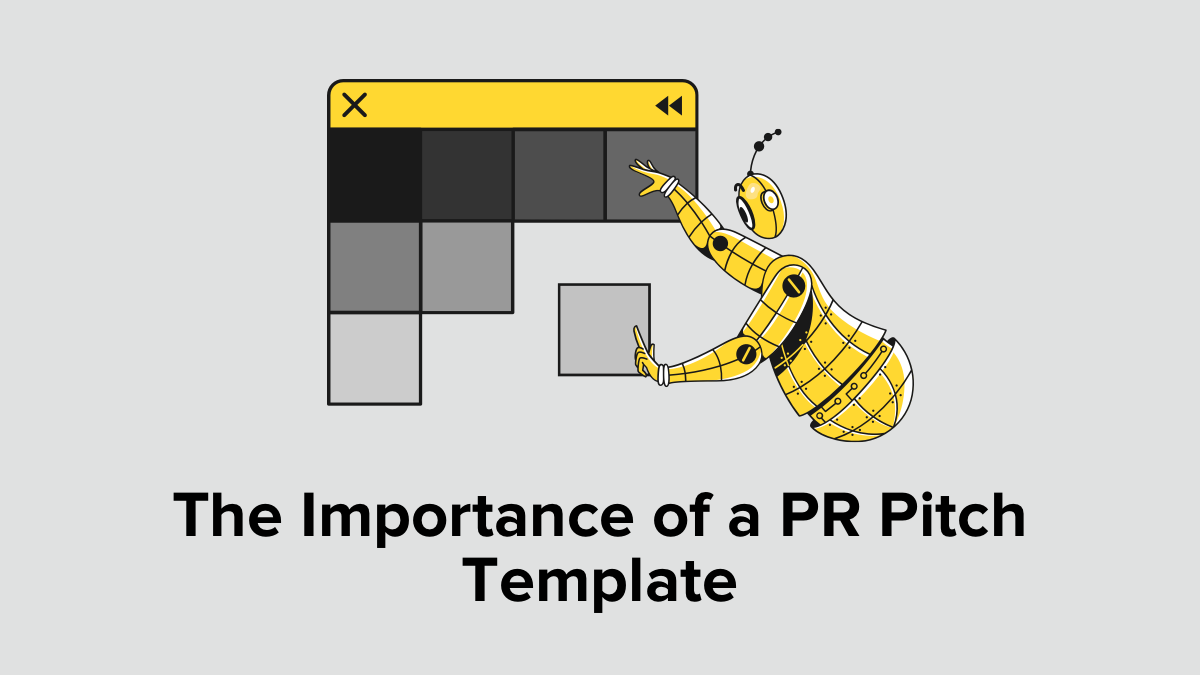The Importance of a PR Pitch Template

Whether you want to admit it or not, using templates is an easy way to capture all the important details you need and save yourself a bit of time tracking down meaningless information. The importance of using a PR pitch template can help you know exactly what kind of information your pitch should include and ensure that you aren’t missing any vital details a journalist needs to know.
What Is Your Message?
Before you start crafting your pitch, take a moment to think of the overall message you want to convey or share. Are you aiming to generate interest, general coverage, an interview opportunity, or a feature story? Knowing what news you are pitching is going to help you hone in on exactly what you need to say and how to say it.
Also, remember that you don’t have to say everything within your first email especially if you haven’t connected with the journalist before. Building relationships is vital to media relations and we've outlined tips, tricks, and industry advice you can start implementing into your current and future campaigns.
Who Are You Targeting?
Next, think about the outlet you are targeting. Who is their target audience? How are their articles written in comparison to other news sites? Why do they include specific information that others don’t? These questions will not only help you formulate the best way to craft a pitch but also ensure you have all the information presented to the journalist right off the bat.
When it comes time to incorporate this information into your pitch make sure you cover the information specific to the outlet and make sure it’s valuable to them. For example, if you’re pitching a consumer product chances are Business Insider isn’t a good fit but Digital Trends or Gizmodo might be better options.
What Should You Include?
Once you know your overall goal and who you want to target, then it comes time to start crafting your message(s) specifically to the journalist you are contacting. Yes, you don’t want to send the same thing to each person you contact but you can still create a framework to build off of. This is where the importance of having a PR pitch template comes into play.
For example, say you are sharing news about an upcoming round of funding. Think about all the components of the round, those involved, and the company that helps to tell the entire story. Our Funding Announcement pitch template explains this is what you should be including in your pitch:
- WHO
- Who is raising the round?
- Who are the investors? Were they part of any previous rounds?
- Who is on the team and why are they important to sustained growth?
- WHAT
- What is the company stage?
- What is the funding amount?
- What is the evaluation of the company?
- What does the company do? Why is the company unique?
- WHY
- Why is this funding important and for what will it be used?
Each point above incorporates the typical information a funding announcement includes that would be shared by outlets such as TechCrunch or Crunchbase News.
Once you’ve answered all of the questions above then it’s time to craft them into an easily digestible message that a journalist can interpret quickly. Through our experience, we have found using bullet points is a great way to easily identify the most important points of a pitch and limit the amount of information a journalist needs to process it. On average, we (OnePitch) found journalists spend roughly 5 seconds reviewing a pitch before they determine if it’s relevant and worth pursuing.
________
At the end of the day, there is no one-size-fits-all approach to virtually anything. But, as professionals, we can work smarter instead of harder to achieve our goals and limit the amount of time we spend doing so.
For more information on how to craft other pitch templates, view our Pitches That Placed series which highlights pitches that have landed coverage in top-tier, trade, and regional publications.
Want more blogs like this?
Fill out the form below to subscribe to our newsletter and receive emails with the top blogs from The TypeBar!
